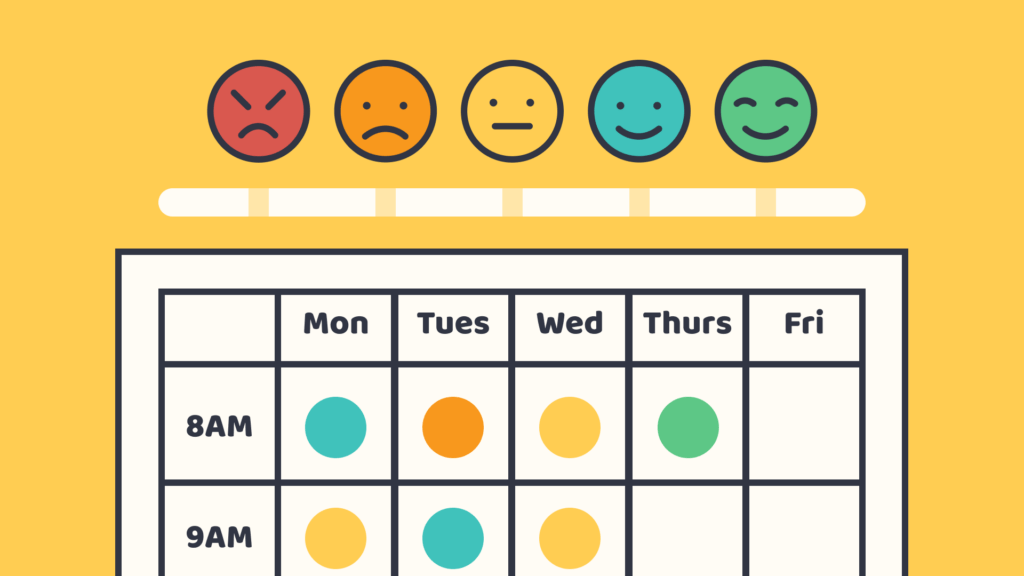13 Classroom empathy activities to teach understanding
In this guide
Why is empathy an important skill for students to learn?
While teachers are primarily responsible for imparting content knowledge to their students, they also have a larger, less well-known task: molding children into well-adjusted, functional humans. A huge part of successfully functioning in social and societal settings is the ability to empathize with others and increasingly this job seems to be becoming an everyday part of a teacher’s load.
Empathy is the ability to understand and share the feelings of another person. Incorporating empathy education into the classroom has numerous benefits, such as helping students learn acceptance of others, reducing bullying, building stronger relationships and establishing a sense of security in the classroom to mention a few. You can read more about the science behind social emotional learning in some of our other blog posts.
As the teacher, you’ll also enjoy the benefit of working with more emotionally intelligent and balanced kids every day! If you’ve ever had the unfortunate experience of being the target of bullying by a poorly adjusted student – like I have – you’ll know why it’s important to eliminate that type of behavior at its root.
But how should you go about teaching empathy in the classroom? Below are some suggestions for activities you can do with your students to encourage learning empathy.
1) Expressing emotions through art
There’s a reason that art therapy is a respected mental health profession. Creating art helps people to express their feelings in a way that words may not sufficiently convey. Drawing, painting, and other forms of artmaking can be cathartic in addition to encouraging mindfulness.
There are endless art activities for all ages and levels, but if you’re not sure how to start getting your students to express their emotions, drawing or painting their feelings is a great way to begin. Here are some prompts to get them started:
- What color is this feeling?
- How big is this feeling?
- How does this feeling move or does it have a shape?
- Where does this feeling live in your body?
If making art doesn’t resonate with you or your students, looking at art is also a great option. Taking the time to unpack an artwork to discover what the artist was feeling and thinking when they created it is a fantastic exercise in empathy.
2) Labeling feelings

If charts are more your speed, download or create a worksheet where your students are tasked with labeling and exploring different feelings. Maybe the most contemporary representation of emotion is the smiley face and its other emotional counterparts. But do students really know which face is happy? Sad? Angry? And how this translates to faces in real life.
Today’s students will be very familiar with the emoji. Ask them to explain what various emojis mean, and how they know. Here are some of the most ubiquitous:
- 😀 (very happy)
- 🙂 (happy or content)
- 🥺 (sad)
- 😠 (angry)
3) Act it out
“Drama queen” is a nickname for someone who often exaggerates an emotional reaction to an event or situation. This makes sense, because in theater an actor needs to express their feelings in a big way so the audience can understand even from a distance.
Charades, anyone? Have your students act out specific emotions while the rest of the class guesses what emotion is being conveyed. Some clues might be stomping feet to express anger, balling up fists near the eyes for sadness, and physically cowering to demonstrate fear.
4) Story time

You already know that reading is one of the best ways to learn something new, but did you know that reading also fosters empathy? From the beginning of time, parents and teachers have been telling children stories entwined with moral lessons in the hope that it will encourage them to grow into more emotionally intelligent adults.
When I was in elementary school, “The Rainbow Fish” was a staple for read-alouds. If you don’t have a favorite on hand, here’s a great list of some moral heavy-hitters. For more advanced readers, assign a novel for them to read and discuss together.
Here’s a quick and easy one you can incorporate daily. Have your students sit (or stand) in a circle. Each student takes turns sharing how they’re feeling on that day – even one word will do. If you’re in a class that has an established morning meeting, this is a great activity to add in. This will not only model great listening behaviors and encourage talking and sharing of problems but will allow students to make connections between emotions and their body language and facial expressions, understand how and why their peers might be feeling and provide empathy and suggestions for how a classmate could tackle tricky situations.
6) Hobby bingo
I remember doing this at the start of the school year, as it’s also a great activity to get to know your peers. Learning about different people and their likes and dislikes is an important part of developing empathy.
Give each of your students a customized bingo sheet with various hobbies and activities (video games, horse riding, etc) written in the boxes. Their task is to find someone in the class who likes the thing written in the box – then they can mark the box with an X.
An important rule is that one student equals one box – no cheating by doubling up! The first one to get bingo wins (and now has more empathy for their classmates!)
7) Conversation cues
Why not talk it out? Supply your students with a statement or a question to prompt conversation. Here are some prompts to get a discussion about empathy started:
- What would you say to a friend who is sad?
- What would you do if your friends were angry with each other?
- How could you help a peer who is being bullied?
8) Pay it forward
Acts of kindness are the ultimate indicator of empathy. In my religion class I once received an assignment to document every act of good I did during the week. This is a great way to ensure you’re being mindful of the impact you have on the world around you – negative or positive.
You can assign your students the same task, or simply ask them to share out or journal about a time they helped someone in need, and how it made them feel. Whatever you do, just don’t show them the 2000 movie “Pay It Forward” starring Haley Joel Osment. I’m still scarred from the emotional devastation.
9) Roleplay
Sometimes feeling empathy requires a certain amount of imagination. It’s all about putting yourself in someone else’s shoes – or experiences – and roleplay is a great way to do that.
In pairs or small groups, your students role play an imagined scenario. The guiding question should be “How would I feel if….” Afterwards, be sure to allot time for your class to reflect.
Teachers should also be mindful of what might be triggering for students in your cohort.
10) Mood charts

If your goal is to get your students to become more familiar with their own thoughts and feelings, a mood chart is the way to go. Your students will be in charge of tracking their moods and feelings over a period of time and drawing conclusions based on the data. I recommend color coding the different feelings for visibility.
11) Dear diary
Journaling is a great way to reflect on events and emotions. Some teachers require journaling every day, but it’s also fine to reserve it for special occasions. For example, what big feelings came from a class holiday party or a field trip?
12) Same and different
Here’s another game to help your students get to know one another. Stand at the front of the class and provide prompts. If a student agrees or identifies with a prompt, they should stand up. Here are some easy ones:
- I have a sibling
- I have a pet
- I’ve been on a vacation to another country
- I’m part of a team or club
- I have moved homes before
- Etc.
13) Emotion collage
Who doesn’t love a good collage? Similar to today’s popular mood boards, an emotion collage can indicate a wide range of feelings and emotional responses.
Provide newspapers, magazines, and child-friendly scissors. Your students will create collages centered on emotions.
There are plenty of ways to customize this assignment too! You could assign a specific emotion for the student to identify, ask the student to represent their emotions, or suggest a scenario and allow the student to interpret the emotions that would follow.
Empathy ultimately makes our world a better place to live. Through understanding and feeling compassion for one another, we are making our communities safer and more joyful places. So, go forth and teach empathy!
References
- Abramson, A. (2021). Cultivating Empathy. [online] American Psychological Association. Available at: https://www.apa.org/monitor/2021/11/feature-cultivating-empathy.
- Armstrong, K. (2017). ‘I Feel Your Pain’: The Neuroscience of Empathy. APS Observer, [online] 31(1). Available at: https://www.psychologicalscience.org/observer/neuroscience-empathy.
- Davis, C.M. (1990). What Is Empathy, and Can Empathy Be Taught? Physical Therapy, 70(11), pp.707–711. doi:https://doi.org/10.1093/ptj/70.11.707.
- Delisle, D.S. and Delisle, J. (2021). Creating Kind and Compassionate Kids. Routledge.
- France, H. (2021). The Empathy Workbook for Kids. Rockridge Press.
- Harvard Graduate School of Education (2018). How to Build Empathy and Strengthen Your School Community. [online] Making Caring Common. Available at: https://mcc.gse.harvard.edu/resources-for-educators/how-build-empathy-strengthen-school-community.
- Henry James Garrett (2020). This Book Will Make You Kinder. Penguin.
- Johnson County Library. (n.d.). Children’s Books that Teach Empathy and Kindness from HuffPost. [online] Available at: https://jocolibrary.bibliocommons.com/list/share/558294898/1545565539.
- Kirby, B. (2014). Activities for Developing Empathy.
- Parfait Adegboyé Bassalé (2013). The Story and Song Centered Pedagogy: Teaching Empathy in the classroom.
- Reynolds, W. (1987). Empathy: we know what we mean, but what do we teach? Nurse Education Today, 7(6), pp.265–269. doi:https://doi.org/10.1016/0260-6917(87)90127-4.
- Riess, H. (2019). The Science of Empathy. Journal of Patient Experience, [online] 4(2). doi:https://doi.org/10.1177/2374373517699267.
- Stevens, K. (2022). Empathy Journal: A Book for Kids: Prompts to Build Compassion and Understand the Feelings of Others. Rockridge Press.

Jessica Pastore
briefcase iconMuseum Educator
Jessica Pastore is a museum educator living and working in New York City. Her background is in social studies education and world history. She has taught in both classroom and gallery settings for the past ten years.
Other posts
Want more content like this?
Subscribe for blog updates, monthly video releases, trending topics, and exclusive content delivered straight to your inbox.












